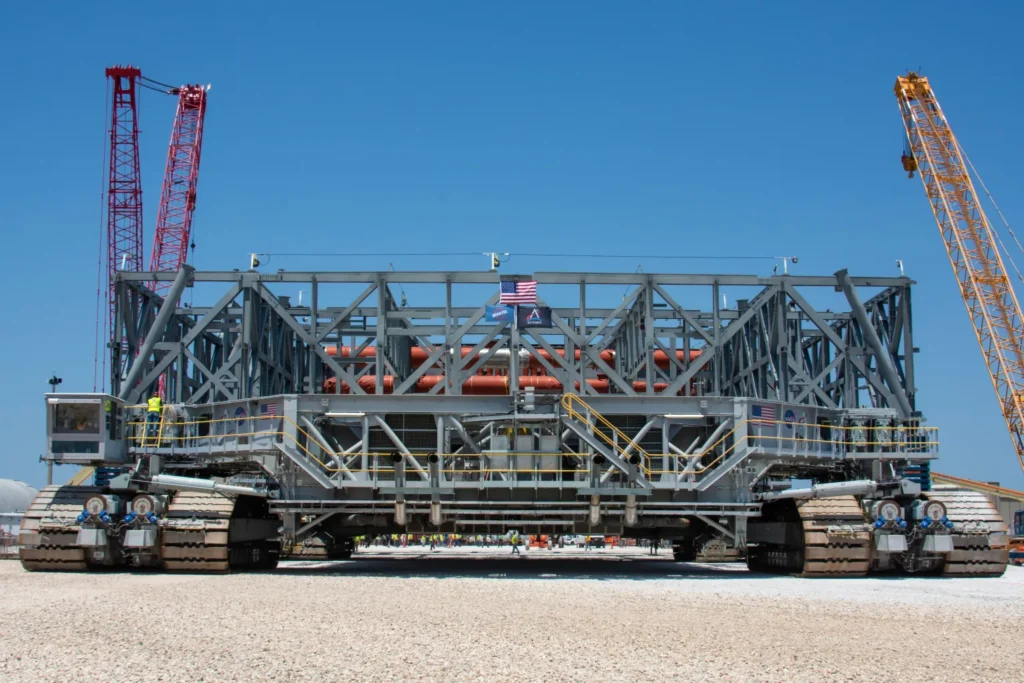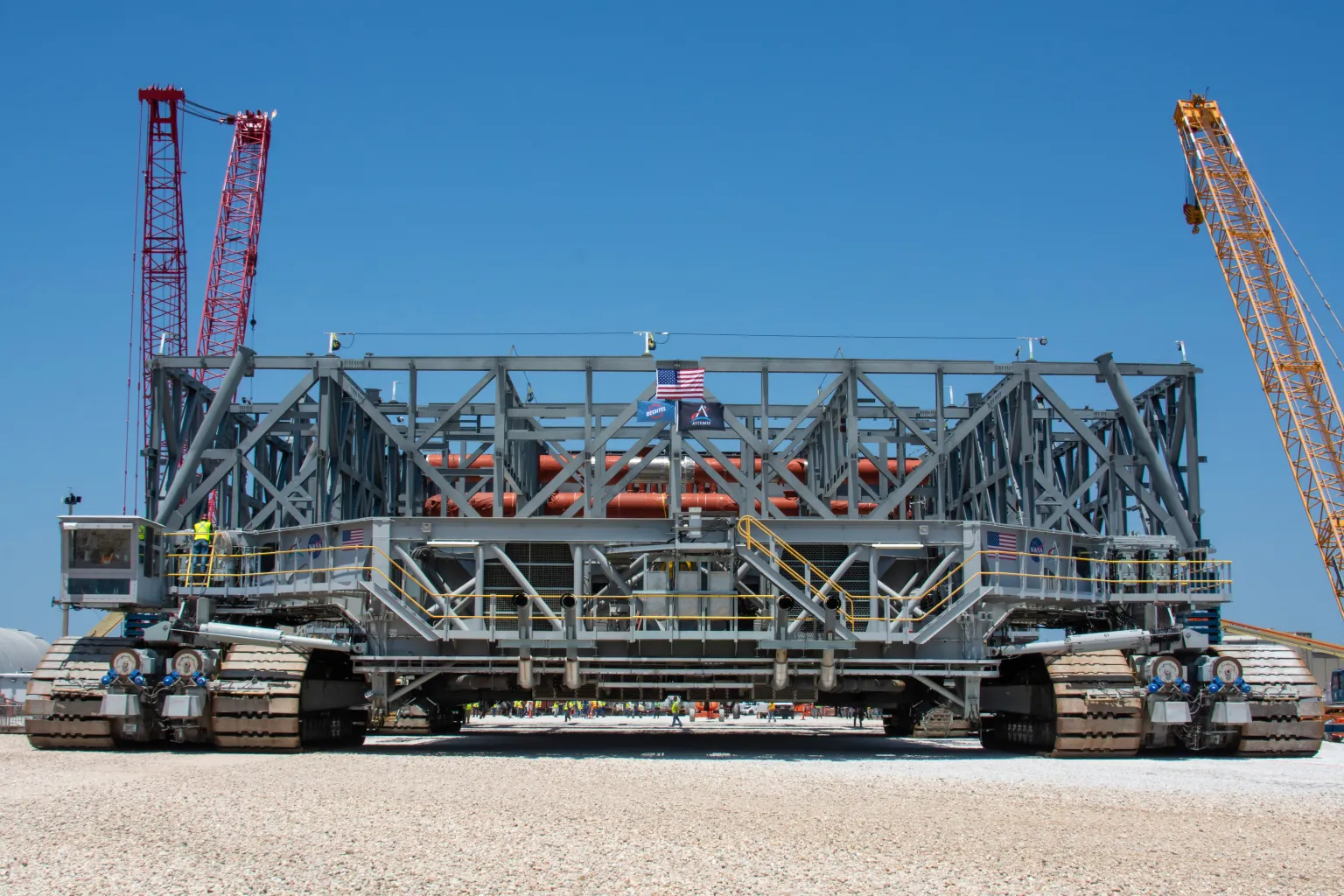“NASA Mobile Launcher 2, NASA, Artemis missions, Mobile Launcher 2, SLS Block 1B, lunar exploration, space launch system, Kennedy Space Center, Orion spacecraft, moon missions, space technology”
Discover how NASA’s Mobile Launcher 2, pivotal for the Artemis missions, is setting the stage for the future of lunar exploration. Learn about the construction, capabilities, and the critical ‘Jack & Set’ process of the SLS Block 1B at Kennedy Space Center. Explore how this engineering marvel will help NASA land the first woman and first person of color on the Moon, paving the way for Mars missions.

In the heart of Florida, at NASA’s Kennedy Space Center, a monumental step has been taken towards the future of lunar exploration with the assembly of Mobile Launcher 2 (ML2). This event marks a pivotal advancement in the Artemis missions, as NASA prepares to send crewed missions to the Moon using the more powerful Space Launch System (SLS) Block 1B rocket. The recent successful transfer of the mobile launcher’s primary base structure to its permanent mount mechanisms by NASA’s Exploration Ground Systems (EGS) Program and contractor Bechtel National Inc. symbolizes a leap forward in space exploration capabilities.
The Significance of the NASA Mobile Launcher
The mobile launcher is not just a piece of infrastructure; it is the backbone of NASA’s Artemis launch architecture. Designed to support the SLS Block 1B, the most powerful rocket NASA has ever built, ML2 will serve as the primary interface between the ground systems and the rocket itself. It is here that the SLS rocket, topped by the Orion spacecraft, will be assembled, integrated, and eventually launched towards the Moon.
This launcher is crucial for facilitating the agency’s ambitious goals of returning humans to the lunar surface, landing the first woman and the first person of color on the Moon, and setting the stage for future manned missions to Mars. Its role extends beyond just launching rockets; it supports critical pre-launch testing and integration, ensuring that all systems are go for launch.
The “Jack & Set” Process Explained
A remarkable feature of the ML2’s assembly was the “Jack & Set” process, a critical phase in its construction. The initial assembly began with the structure being built on temporary pedestals, significantly enhancing both efficiency and safety by keeping the work closer to the ground. These massive steel truss subassemblies, some weighing over 100,000 pounds, were first assembled into a 2.6 million-pound skeleton.
Once fully assembled and structurally secured, a specialized heavy-duty jacking system lifted the entire structure, allowing space for NASA’s giant crawler-transporter underneath. This crawler then carefully repositioned the base about 200 feet to its final resting place atop six permanent pedestals. This intricate process not only demonstrates the engineering prowess behind NASA’s Artemis program but also underscores the collaborative efforts of various teams from across the country.
The Role of Collaboration in NASA’s Endeavors
The successful implementation of the ML2 project is a testament to the collaborative efforts between NASA and Bechtel, along with numerous other subcontractors and offsite fabrication shops nationwide. Darrell Foster, the ground systems integration manager for NASA’s EGS Program, emphasized the collective hard work and intricate planning involved, from the engineers and analysts who designed the structure to the subcontracting buyers and delivery managers responsible for material procurement.
Next Steps and the Future
With ML2 now securely mounted on its new launch mechanisms, the focus shifts to installing vital systems such as critical piping and electrical equipment. These installations are crucial for the integration of the ground systems with the SLS rocket and Orion spacecraft. The mobile launcher will remain at its park site throughout the build and commissioning phases, underscoring its role as a pivotal element of the Artemis missions.
Looking ahead, the SLS Block 1B is poised to enhance NASA’s lunar exploration capabilities. It is designed to send astronauts and heavier cargo into lunar orbit, surpassing the capacities of its predecessor, the SLS Block 1. This marks a significant step not only towards more ambitious lunar exploration but also in preparing for eventual human missions to Mars.
Conclusion
The assembly of Mobile Launcher 2 at Kennedy Space Center is more than a construction milestone; it is a symbol of the future of human space exploration. With each bolt and truss secured, NASA inches closer to realizing its vision of a sustained human presence on the Moon, laying the groundwork for the eventual exploration of Mars. The journey of Artemis continues, propelled by innovation, collaboration, and an unyielding quest for discovery.
Read More-
- NASA Webb Telescope Hints at Possible Atmosphere Surrounding Rocky Exoplanet
- New NASA Black Hole Visualization Takes Viewers Beyond the Brink
- NASA Artemis Generation: Cultivating the Moon Trees Across America
- Curious Asteroid Selam, Spotted by NASA Lucy Spacecraft, Is a Cosmic Toddler










